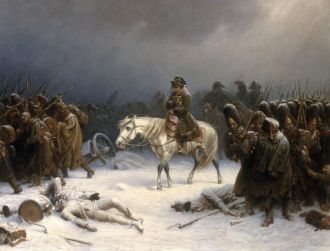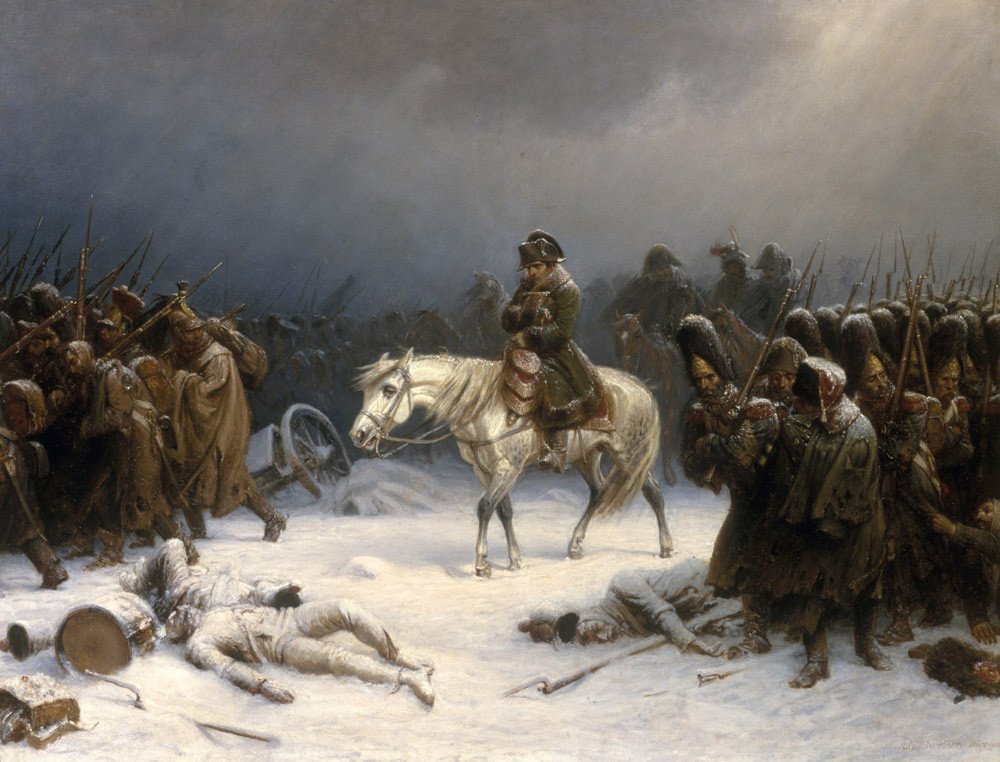Media release
From:
DNA from Napoleon’s 1812 army identifies the pathogens likely responsible for the army’s demise during their retreat from Russia
In the summer of 1812, French emperor Napoleon Bonaparte led about half a million soldiers to invade the Russian Empire. But by December, only a fraction of the army remained alive. Historical records suggest that starvation, cold, and typhus led to their demise. In a new study publishing October 24 in the Cell Press journal Current Biology, a team of microbial paleogenomicists extracted DNA from the soldiers’ teeth and found no trace of typhus. Instead, they identified two pathogens known to cause enteric fever and relapsing fever—ailments which likely contributed to the army’s downfall.
“It’s very exciting to use a technology we have today to detect and diagnose something that was buried for 200 years,” says lead author Nicolás Rascovan of the Institut Pasteur in Paris.
For centuries, historians have debated the factors that contributed to Napoleon’s army’s demise. Accounts from doctors and army officers suggested it was likely the result of typhus, an infectious disease that was common among armies of the time. The discovery of body lice—the main vector of typhus—on the remains of Napoleon’s soldiers, and the DNA of Rickettsia prowazekii—the bacterium responsible for typhus—further bolstered this assumption.
With new technology in hand capable of analyzing ancient DNA, Rascovan and his team set off to reanalyze samples from Napoleon’s fallen soldiers to see whether typhoid was indeed the culprit.
The researchers extracted and sequenced DNA from the teeth of 13 soldiers buried in a mass grave in Vilnius, Lithuania, which was along the route of the French army’s retreat from Russia. They then removed all environmental contamination to isolate and identify DNA fragments from bacterial pathogens.
Instead of pathogens for typhus, the team found traces of Salmonella enterica, a bacterium that causes enteric fever, and Borrelia recurrentis, responsible for relapsing fever, which is also transmitted by body lice.
The researchers did not detect R. prowazekii or Bartonella quintana, the cause of trench fever, which has been identified in previous research on different soldiers from this site. Rascovan says this discrepancy could be explained by the usage of different sequencing technologies. Earlier studies relied on polymerase chain reaction, or PCR, a technology that makes many copies of a specific DNA segment from limited starting material.
“Ancient DNA gets highly degraded into pieces that are too small for PCR to work. Our method is able to cast a wider net and capture a greater range of DNA sources based on these very short ancient sequences,” says Rascovan.
To the team’s surprise, they also found that the B. recurrentis strain found on Napoleon’s soldiers belonged to the same lineage that was recently found to be present in ancient Britain 2,000 years earlier during the Iron Age. This lineage somehow persisted for millennia in Europe, but all present-day strains sequenced so far belong to a different lineage.
“This shows the power of ancient DNA technology to uncover the history of infectious diseases that we wouldn't be able to reconstruct with modern samples,” Rascovan says.
Multimedia





 International
International



